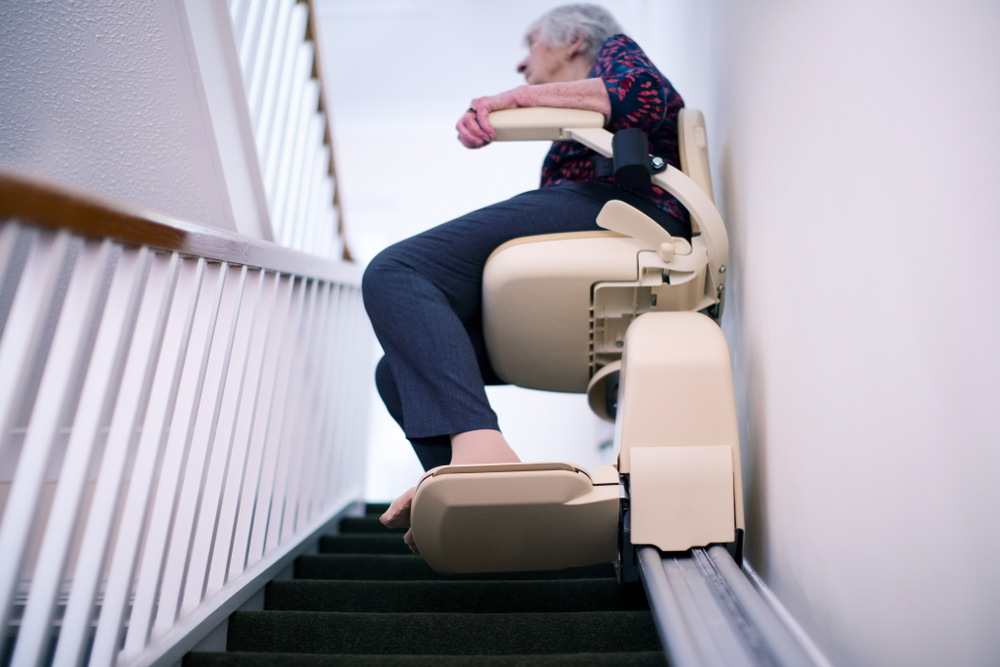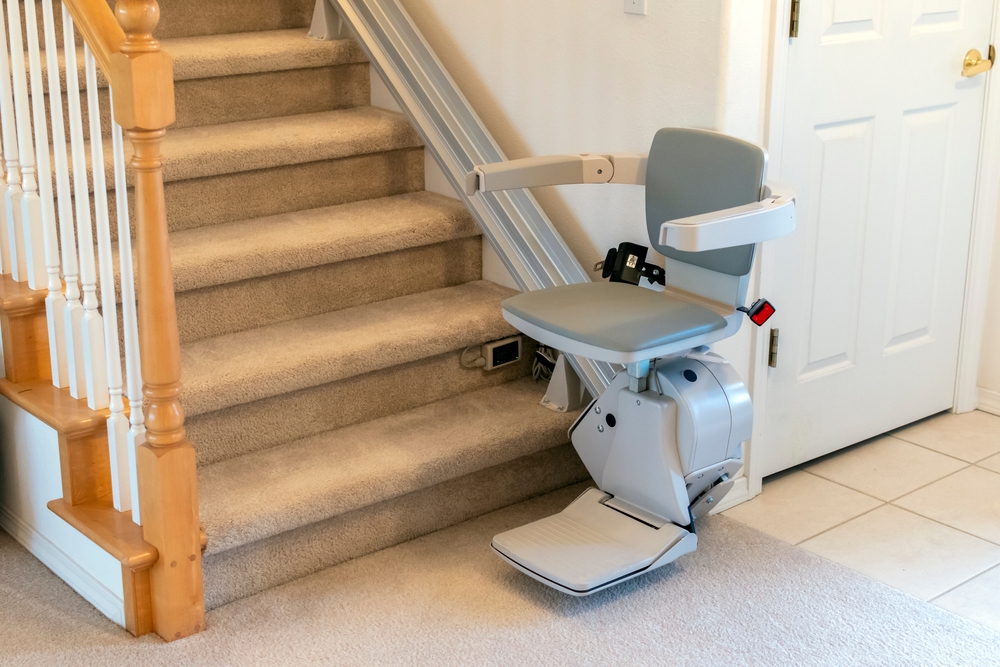How Much Electricity Does a Stairlift Use?

With the recent increase in energy prices around the country, many people who rely on mobility aids are asking: how much electricity does a stairlift use?
As a crucial part of any household, anyone particularly worried about how their energy is spent will also be wondering how much it could run up the bill.
But don’t fret!
The experts here at Senior Stairlifts are on hand to help, as well as answer some of the most common questions we get about electricity usage and overall running costs!
If you have any more questions – or want to see if a stairlift would fit into your current home and lifestyle – why not give our team a call? We’d love to hear from you.
But with that, let’s jump right in.
Table of Contents

How Much Electricity Does A Stairlift Use?
Using current energy prices as a guide, the electricity required to power a stairlift could cost as little as around £10 to £15.
The average stairlift only uses around 24 Watts of energy per hour – although some straight stairlifts might only use 23 Watts per hour depending on the model.
Surprisingly, even the most energy-consuming curved stairlifts only use around 35 Watts per hour. For comparison, an LCD TV uses a whopping 210 Watts per hour (0.21 kWh) – so you can safely navigate the expanse of your home with it costing less than watching your favourite programs!
In this sense, the use of a stairlift is comparable to any household appliance.
In fact, it’s less expensive to run than most – if not all -common appliances you use every day in your home.
For perspective, Which? estimates the annual rough costs of the following:
- Tumble dryer – £170
- Fridge freezers – £91 to £146
- Dishwashers £96
- Ovens £80
- Washing machines £77
As you can see, stairlifts use comparatively less electricity than other things in your home.
Plus, with new advancements in efficiency standards and power-saving devices, modern stairlifts are more energy-efficient than they have ever been.
Using rechargeable batteries, your bills are likely to be minimally affected by the average 14 trips stairlifts take daily.
Despite energy price hikes set to continue, you can be rest assured that your stairlift will still be affordable to run.
For more information on the specific stairlifts from Senior Stairlift, simply get in touch to chat with a member of the team.
How Does My Senior Stairlift work?
In order for stairlifts to operate efficiently, they must always be switched on – meaning they need a constant and consistent supply of electricity.
This is because stairlifts include batteries that are charged through the movement of the stairlift. Rather like a car battery and alternator needing the vehicle to be driven to replenish its power store, a stairlift will keep itself going so long as it has that stream of charge.
But it’s important to remember that stairlifts are designed to be left on – and this is part of an important design feature.
This means your batteries are constantly charged, helping you avoid the panic or frustration of coming to a complete stop halfway up or down the stairs, or not being able to use your stairlift at all.
Turning My Stairlift Off At The Wall
Although there could be the temptation to turn your stairlift off completely to save money, you could be causing yourself more hassle.
Turning off your stairlift for extended periods of time could cause the batteries to lose their charge completely – meaning the stairlift won’t operate when you need it.
On such an occasion, this means you’d be stuck with the inconvenience of waiting for them to fully charge back up before using your device, leaving you out of patience and even out of puff!
Because of this useful feature, stairlifts are actually some of the most energy-efficient appliances available on the market.
If you happen to turn your stairlift off at the wall and it appears to not be charging back up or stops working, you may need a stairlift repair or callout.
So, What Happens In A Power Cut?
In the event of a power cut, you will not be able to charge your stairlift, but the batteries enable you to do approximately 8 return journeys with a single charge.
Of course, all this talk of ‘constant supply’ might cause understandable concern about your bills. During a cost-of-living crisis, possibly giving up your mobility is you’ll want to worry about, which is why we’ll cover some of the grants and caps available in the next section.
But if you’re still concerned about your stairlift – or are thinking of getting one but are worried about energy – let us know.
We can help you explore the best options for you, your home and your budget.
Can I Get A Grant?
Thankfully, the government has introduced various price caps over the past year – with scope for the future. However, fuel energy prices have still hit volatile highs.
You might also be pleased to know that, from April, some people will be eligible for grants from the government to help with energy costs, particularly the same demographics that might require stairlifts.
For example, low-income households can claim £300 for their household, and those with certain disabilities can get £150, according to the BBC, which can be put towards the running costs of your stairlifts.
When Will I Need To Replace The Batteries?
Depending on your usage, your stairlift’s batteries will have an average lifespan of around 2 to 5 years.
Of course, more prolonged use will cause your batteries to deplete faster, which is why it’s crucial for you to book regular stairlift servicing to prolong the life of your stairlift.

Still Worried? Talk To The Experts.
At Senior Stairlifts, we work hard to exceed the expectations of all our customers, focusing on providing mobility assistance with fantastic after-care and service – wherever and whenever you need us.
Our engineers work reactively to resolve any issues, with supportive warranties to ensure everyone gets prompt, high-quality service at an affordable cost.
So whether you’re starting out on your mobility journey – or already have a stairlift with us – we can help. From warranty worries to energy explanations, we’re on hand around the clock to make sure you feel safe and secure in your home.
Use our handy callback form and pick a time that works for you.